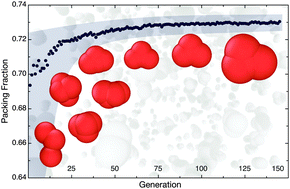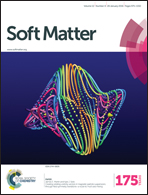Optimizing packing fraction in granular media composed of overlapping spheres
Abstract
What particle shape will generate the highest packing fraction when randomly poured into a container? In order to explore and navigate the enormous search space efficiently, we pair molecular dynamics simulations with artificial evolution. Arbitrary particle shape is represented by a set of overlapping spheres of varying diameter, enabling us to approximate smooth surfaces with a resolution proportional to the number of spheres included. We discover a family of planar triangular particles, whose packing fraction of ϕ ∼ 0.73 is among the highest experimental results for disordered packings of frictionless particles. We investigate how ϕ depends on the arrangement of spheres comprising an individual particle and on the smoothness of the surface. We validate the simulations with experiments using 3D-printed copies of the simplest member of the family, a planar particle consisting of three overlapping spheres with identical radius. Direct experimental comparison with 3D-printed aspherical ellipsoids demonstrates that the triangular particles pack exceedingly well not only in the limit of large system size but also when confined to small containers.


 Please wait while we load your content...
Please wait while we load your content...